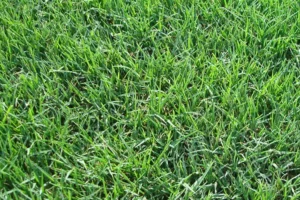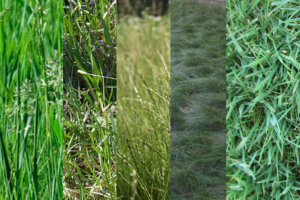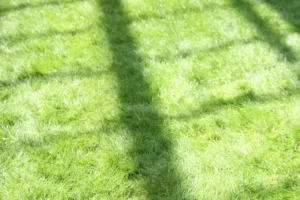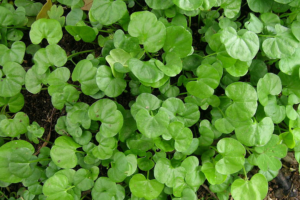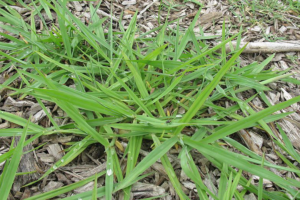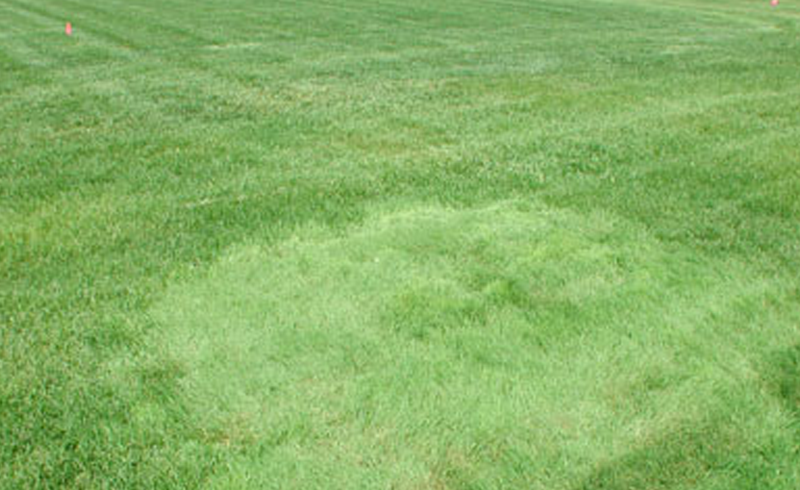
Introduction
Brief Overview of Creeping Bentgrass
Creeping Bentgrass, scientifically known as Agrostis stolonifera, is a perennial grass species highly valued for its fine texture, dense growth, and superior tolerance to close mowing. Originating from Europe, it has become a popular choice for golf courses, particularly putting greens, due to its ability to withstand heavy foot traffic and its smooth ball roll. However, its use is not limited to golf courses; it’s also found in high-end lawns and landscapes where a lush, carpet-like appearance is desired.
Despite its aesthetic appeal, Creeping Bentgrass is not a common choice for home lawns due to its high maintenance requirements. It requires frequent watering, mowing, and fertilization and is more susceptible to diseases than other grass species. However, Creeping Bentgrass can create a stunning and luxurious lawn with the proper care and management.
Importance and uses of Creeping Bentgrass in lawns and golf courses
Creeping Bentgrass is renowned in the world of turfgrass management, particularly in the realm of golf course design. Its ability to tolerate shallow mowing heights and its propensity for lateral growth makes it ideal for creating smooth, uniform, and fast-putting greens. This grass species has a unique ability to creep along the ground and form tight-knit, dense turf, providing a superior playing surface for golfers.
Beyond the golf course, Creeping Bentgrass is also used in high-end turf situations where a premium is placed on lawn appearance. Its fine texture and bright green color can create a beautiful, luxurious lawn that stands out. However, this beauty comes with a price, as Creeping Bentgrass requires high maintenance to keep it looking its best. Despite these challenges, a Creeping Bentgrass lawn can be a rewarding and stunning landscape feature for those willing to invest the time and resources.
Understanding Creeping Bentgrass
Description and Characteristics of Creeping Bentgrass
Creeping Bentgrass is a cool-season grass known for its fine texture and bright green color. It has a unique growth habit, spreading via stolons, or above-ground stems, that “creep” along the soil surface. This creeping growth habit allows it to form a dense, carpet-like turf highly desirable for golf courses and high-end lawns.
Bentgrass becomes very ‘puffy’ when maintained at mowing heights above one inch.
The leaves of Creeping Bentgrass are small and slender, giving the grass a fine texture that is soft to the touch. The grass blades are flat and smooth, with a bright green color that can add a lush, vibrant look to any landscape. The grass also has a shallow root system, which allows it to tolerate low mowing heights and makes it more susceptible to drought and heat stress.
The growth habit and lifecycle of Creeping Bentgrass
As a cool-season grass, Creeping Bentgrass grows most actively in the spring and fall when temperatures are moderate. During the hot summer, the grass may go dormant if not adequately watered, resulting in a brown or tan color. However, adequate watering can maintain its green color throughout the summer.
Creeping Bentgrass spreads via stolons, which grow horizontally along the soil surface. These stolons can root at the nodes, forming new plants and creating a dense, interconnected turf. This creeping growth habit is a crucial characteristic of the species and is the reason for its name. However, this growth habit can also make the grass invasive, as it can spread into flower beds and other areas where it’s not wanted.
Regions where Creeping Bentgrass thrives
Creeping Bentgrass is best suited to regions with cool, humid climates. It thrives in areas with cool summers and mild winters, such as the northeastern and northwestern United States. The grass can maintain active growth throughout the year in these regions, creating a lush, green lawn.
However, Creeping Bentgrass can struggle in regions with hot, dry summers or harsh winters. The grass may go dormant or even die if not properly cared for in these conditions. Therefore, if you’re considering planting Creeping Bentgrass, it’s essential to consider your local climate and whether it’s suitable for this species.
[College of Agricultural Sciences at Oregon State University provides detailed information about Creeping Bentgrass, including its growth habits and ideal conditions: Creeping Bentgrass | College of Agricultural Sciences]
Benefits of Creeping Bentgrass
Aesthetic appeal of Creeping Bentgrass
Creeping Bentgrass is highly valued for its aesthetic appeal. Its fine texture and bright green color can create a beautiful, luxurious lawn that stands out. The grass forms a soft, dense, carpet-like turf, providing a lush and inviting landscape. Creeping Bentgrass can add elegance and sophistication to any landscape used on a golf course or a residential lawn.
Furthermore, its ability to tolerate shallow mowing heights allows Creeping Bentgrass to be maintained at a very short height without losing its health or vigor. This makes it an excellent choice for creating a smooth, uniform lawn or a high-quality putting green. With its fine texture and uniform growth, Creeping Bentgrass can create a visually pleasing and professional-looking lawn.
Creeping Bentgrass in golf courses: Why it’s preferred.
Creeping Bentgrass is the grass for many golf courses, particularly for putting greens. Its ability to tolerate low mowing heights and its propensity for lateral growth makes it ideal for creating smooth, uniform, and fast putting surfaces. Golfers appreciate the predictability and speed of a Creeping Bentgrass green, which allows for a more precise and controlled game.
In addition to its performance benefits, Creeping Bentgrass has aesthetic advantages on the golf course. Its bright green color and fine texture create a visually pleasing contrast with the surrounding landscape, enhancing the overall appearance of the course. Furthermore, its dense growth habit can help reduce soil erosion on the course, making it a practical and beautiful choice.
Environmental Benefits of Creeping Bentgrass
Beyond its aesthetic and performance benefits, Creeping Bentgrass also offers several environmental advantages. Its dense growth habit can help to reduce soil erosion, protecting the underlying soil and improving water quality. By forming a thick, dense turf, Creeping Bentgrass can help to prevent soil particles from being washed away by rain or irrigation.
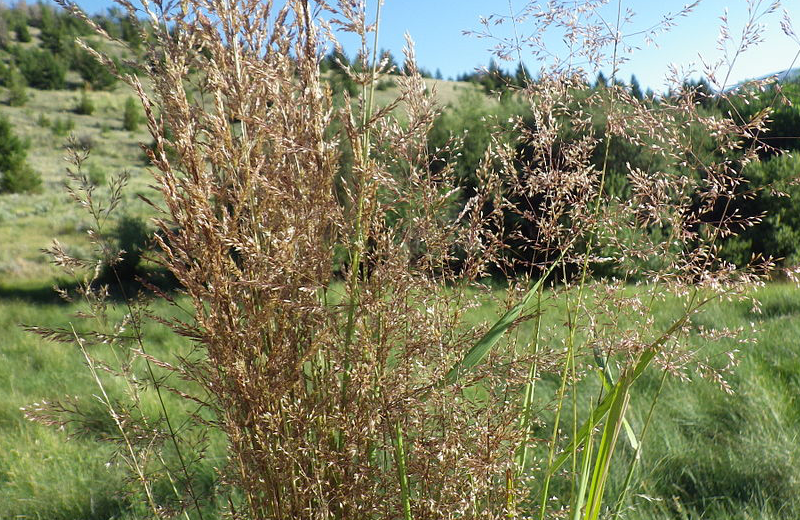
Creeping Bentgrass also has a relatively low water requirement compared to other turfgrass species. While it does require regular watering to maintain its health and color, it can survive periods of drought by going dormant. This can make it a more sustainable choice for areas with water restrictions or homeowners looking to reduce their water use. However, it’s important to note that Creeping Bentgrass does require more frequent watering than some other grass species to maintain its optimal appearance.
Challenges with Creeping Bentgrass
Common diseases and pests that affect Creeping Bentgrass
While Creeping Bentgrass has many advantages, it has its challenges. One of the main issues is its susceptibility to various diseases and pests. Diseases like dollar spot, brown, and fusarium patches can be particularly problematic. These diseases can cause discoloration, thinning, and even death of the grass in severe cases. Regular monitoring and early detection are crucial to managing these diseases.
In addition to diseases, various pests can also affect Creeping Bentgrass. Insects such as billbugs, white grubs, and cutworms can cause damage to the grass, leading to thinning and discoloration. Again, early detection and appropriate treatment are crucial for managing these pests and minimizing their impact on your lawn.
Maintenance challenges with Creeping Bentgrass
Creeping Bentgrass requires a high level of maintenance to keep it looking its best. This includes regular mowing, watering, and fertilization. Because of its dense growth habit and low mowing tolerance, Creeping Bentgrass must be frequently mowed to maintain a uniform and attractive appearance. This can be time-consuming and may require specialized mowing equipment.
Watering is another essential aspect of Creeping Bentgrass care. While the grass can survive periods of drought by going dormant, it requires regular watering to maintain its optimal appearance. This can be challenging in areas with water restrictions or for homeowners looking to reduce their water use.
Finally, Creeping Bentgrass requires regular fertilization to maintain its health and color. However, over-fertilization can lead to excessive growth and increased susceptibility to diseases and pests. Therefore, it’s essential to apply the right amount of fertilizer at the right time to optimize the health and appearance of your lawn.
Strategies to manage these challenges
Despite these challenges, some strategies can help you manage Creeping Bentgrass effectively. Regular monitoring can help you detect diseases and pests early, allowing you to take action before they cause significant damage. There are also various products available, such as fungicides and insecticides, that can help you manage diseases and pests.
Proper mowing, watering, and fertilization practices can also go a long way in maintaining the health and appearance of your Creeping Bentgrass lawn. You can keep your Creeping Bentgrass lawn looking its best by mowing at the right height, watering appropriately, and applying the right amount of fertilizer.
Finally, feel free to seek professional help if you struggle to manage your Creeping Bentgrass lawn. A lawn care professional can provide expert advice and services, helping you overcome the challenges of Creeping Bentgrass care and enjoy a beautiful and healthy lawn.
Planting and Establishing Creeping Bentgrass
When and how to plant Creeping Bentgrass
The best time to plant Creeping Bentgrass is in the late summer or early fall when temperatures are moderate. This allows the grass to establish before the onset of winter, giving it a better chance of survival. Creeping Bentgrass can be planted from seed, sod, or plugs, depending on your preference and the size of the area you’re planting.
To plant Creeping Bentgrass from seed, start by preparing the soil. Remove any existing vegetation and loosen the top few inches of soil. Then, spread the seed evenly over the area and lightly rake it into the soil. Water the area thoroughly and keep it consistently moist until the seeds germinate.
If you’re planting Creeping Bentgrass from sod or plugs, prepare the soil similarly. Then, lay the sod or place the plugs according to the instructions. Water the area thoroughly and moisten it until the grass is established.
Soil preparation and requirements
Creeping Bentgrass prefers well-drained soil with a pH between 5.5 and 7.5. Before planting, it’s a good idea to test your soil to ensure it meets these requirements. You can amend your soil with lime to raise the pH or with sulfur to lower it if necessary.
In addition to the proper pH, your soil should also be well-drained. If your soil is heavy clay or tends to stay wet, you may need to amend it with organic matter or sand to improve drainage. Poorly drained soil can lead to soggy roots and increase the risk of diseases.
Finally, remove any existing vegetation before planting and loosen the top few inches of soil. This will give the Creeping Bentgrass roots a better chance to establish and spread.
Care and maintenance during the establishment
After planting, keeping the area consistently moist is important until the grass is established. This may require watering daily or even twice a day in hot weather. However, be careful not to overwater, as this can lead to soggy roots and increase the risk of diseases.
Once the grass is established, you can gradually reduce watering. However, Creeping Bentgrass will still require regular watering to maintain its optimal appearance, especially in hot weather.
In addition to watering, you should also begin mowing once the grass reaches a height of about 3 inches. Mow regularly to maintain a height of 1.5 to 2.5 inches, depending on your preference and the specific needs of your lawn.
Finally, about 4 to 6 weeks after planting, you should apply a starter fertilizer to promote growth. After that, regular fertilization every 4 to 6 weeks during the growing season can help maintain the health and color of your Creeping Bentgrass lawn.
Maintaining a Creeping Bentgrass Lawn
Mowing and watering practices
One of the critical aspects of maintaining a Creeping Bentgrass lawn is regular mowing. Due to its dense growth habit and low mowing tolerance, Creeping Bentgrass must be frequently mowed to maintain a uniform and attractive appearance. The recommended mowing height for Creeping Bentgrass is between 0.5 to 1 inch for a high-quality lawn or golf course green. However, maintaining such a low mowing height requires a reel mower, as rotary mowers can only cut grass this short by scalping it.
Watering is another crucial aspect of Creeping Bentgrass care. While the grass can survive periods of drought by going dormant, it requires regular watering to maintain its optimal appearance. The exact watering frequency will depend on your local climate and soil conditions, but a general rule of thumb is to water deeply and infrequently. This encourages the grass to develop a deep root system, which can help it withstand periods of drought.
Fertilization needs and schedule.
Creeping Bentgrass requires regular fertilization to maintain its health and color. The exact fertilization schedule will depend on your soil conditions and the specific needs of your lawn, but a general rule of thumb is to fertilize every 4 to 6 weeks during the growing season.
When fertilizing Creeping Bentgrass, it’s important to use a balanced fertilizer that provides the right amounts of nitrogen, phosphorus, and potassium. Nitrogen promotes leaf growth and gives the grass its green color, phosphorus supports root development, and potassium enhances overall plant health.
However, be careful not to over-fertilize, as this can lead to excessive growth and increased susceptibility to diseases and pests. It’s also important to water thoroughly after fertilizing to ensure the nutrients are absorbed into the soil and reach the grassroots.
Disease and pest control strategies
Due to its high maintenance requirements and susceptibility to various diseases and pests, Creeping Bentgrass requires regular monitoring and appropriate treatment measures. Diseases such as dollar spot, brown patch, and fusarium patch can be particularly problematic, causing discoloration, thinning, and even death of the grass in severe cases.
To manage these diseases, it’s essential to maintain good lawn care practices, such as proper mowing, watering, and fertilization. In addition, fungicides can be used to control diseases, but they should be used as a last resort and not as a substitute for good lawn care practices.
Pests such as billbugs, white grubs, and cutworms can also cause damage to Creeping Bentgrass. Regular monitoring can help you detect these pests early and take appropriate action. Various insecticides can help control these pests, but they should be used as a last resort, not a substitute for good lawn care practices.
Renovating and Over-Seeding Creeping Bentgrass
When and why to renovate your Creeping Bentgrass lawn
Over time, even with the best care, a Creeping Bentgrass lawn can become thin or uneven or infested with weeds or undesirable grass species. When this happens, renovation may be necessary to restore the lawn to its former beauty. Renovation involves removing undesirable vegetation and reseeding with fresh Creeping Bentgrass.
The best time to renovate a Creeping Bentgrass lawn is in the late summer or early fall when the grass is actively growing, and weed competition is minimal. This gives the new grass the best chance to establish itself before winter.
Renovation may also be necessary if your lawn has become infested with a disease or pest that can’t be controlled with regular lawn care practices. In this case, renovation can help to remove the infested grass and replace it with healthy, disease-free grass.
How to renovate your Creeping Bentgrass lawn
The first step in renovating a Creeping Bentgrass lawn is to remove the existing vegetation. This can be done using a sod cutter or a non-selective herbicide. Once the existing vegetation has been removed, the soil should be prepared by loosening the top few inches and removing debris.
Once the soil is prepared, Creeping Bentgrass can be reseeded. The seed should be spread evenly over the area and lightly raked into the soil. After seeding, the area should be watered thoroughly and consistently moist until the new grass is established.
After the new grass is established, regular lawn care practices should be resumed. This includes regular mowing, watering, and fertilization to maintain the health and appearance of the lawn.
Over-seeding Creeping Bentgrass
Overseeding is a practice that can help to maintain the density and appearance of a Creeping Bentgrass lawn. It involves spreading seeds over the existing lawn without removing the existing vegetation. This can help to fill in thin areas and improve the overall appearance of the lawn.
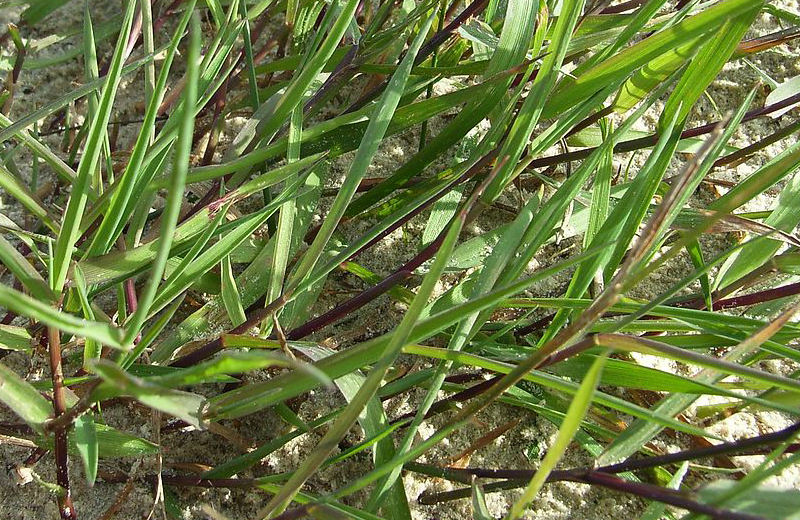
The best time to over-seed a Creeping Bentgrass lawn is in the late summer or early fall when the grass is actively growing, and weed competition is minimal. The seed should be spread evenly over the lawn and then watered thoroughly.
After over-seeding, the lawn should be watered regularly to ensure the new seeds germinate and establish. Once the new grass is established, regular lawn care practices should be resumed. This includes regular mowing, watering, and fertilization to maintain the health and appearance of the lawn.
Creeping Bentgrass vs. Other Grass Types
Creeping Bentgrass vs. Kentucky Bluegrass
Creeping Bentgrass and Kentucky Bluegrass are cool-season grasses popular for their delicate texture and bright green color. However, there are some key differences between the two. Creeping Bentgrass has a creeping growth habit and can tolerate extremely low mowing heights, making it a popular choice for golf courses and high-end lawns. However, it requires a high level of maintenance, including frequent mowing and watering, and it is susceptible to various diseases and pests.
On the other hand, Kentucky Bluegrass has a more upright growth habit and is more tolerant of a range of mowing heights. It is also more tolerant of foot traffic and has a higher drought tolerance than Creeping Bentgrass. However, Kentucky Bluegrass can struggle in hot, dry conditions and may require more watering than Creeping Bentgrass.
Creeping Bentgrass vs. Tall Fescue
Tall Fescue is another cool-season grass with a very different growth habit and care requirement than Creeping Bentgrass. Tall Fescue has a clumping growth habit and produces a lawn with a coarser texture. It is highly drought-tolerant and can survive in a broader range of soil conditions than Creeping Bentgrass.
While Creeping Bentgrass requires frequent mowing to maintain a low height, Tall Fescue can be mowed less frequently and kept at a higher height. This makes Tall Fescue a lower-maintenance option compared to Creeping Bentgrass. However, Tall Fescue may provide a different fine-textured, carpet-like appearance than Creeping Bentgrass.
Creeping Bentgrass vs. Bermuda Grass
Bermuda Grass is a warm-season grass that thrives in hot, sunny conditions. It has a creeping growth habit similar to Creeping Bentgrass but is much more heat and drought-tolerant. Bermuda Grass can be mowed short and is often used for golf courses and athletic fields in warmer regions.
While Creeping Bentgrass struggles in hot, dry conditions, Bermuda Grass thrives in these conditions and requires less watering. However, Bermuda Grass goes dormant and turns brown in cool temperatures, while Creeping Bentgrass can stay green year-round in cool climates. Therefore, the best choice between these two grasses largely depends on your local climate and the specific needs of your lawn.
Case Studies on Creeping Bentgrass:
- Bentgrass Fairway Conversion Improves Playability And Reduces Inputs: This case study from the United States Golf Association discusses how converting a golf course fairway from another type of grass to Creeping Bentgrass improved the playability of the course and reduced the need for inputs like water and fertilizer. The detailed conversion process provides valuable insights for anyone considering a similar project.
- Variation in Creeping Bentgrass Cultivar Responses to Abiotic Stress: This scientific study examines how different cultivars of Creeping Bentgrass respond to various abiotic stresses. The researchers found significant variation in how the different cultivars responded, suggesting that selecting the suitable cultivar for your specific conditions is crucial for success when planting Creeping Bentgrass.
- R.H. Hurley, LLC – Case Studies – bentgrassdoctor: This case study from R.H. Hurley, LLC discusses the greens renovation at Burning Tree Golf Club in Washington, DC. The existing greens were gassed and reseeded with 100% 007 Creeping Bentgrass. The case study provides a timeline of the renovation process and discusses the results, providing valuable insights for anyone considering a similar project.
Frequently Asked Questions About Creeping Bentgrass
What is Creeping Bentgrass?
Creeping Bentgrass is a cool-season grass native to Europe and parts of Asia. It is known for its fine texture and bright green color, and it is commonly used for golf courses, tennis courts, and high-end lawns. Creeping Bentgrass has a creeping growth habit, spreading by sending out runners or stolons. This allows it to form a dense, carpet-like surface tolerating extremely low mowing heights. However, Creeping Bentgrass is also high-maintenance and requires regular mowing, watering, and fertilization to maintain its optimal appearance.
Where does Creeping Bentgrass grow best?
Creeping Bentgrass thrives in cool, humid climates. It prefers full sun but can tolerate some shade. The grass does best in well-drained soil with a pH between 5.5 and 7.5. While it can survive in various soil types, it prefers sandy or loamy soils. Creeping Bentgrass can struggle in hot, dry conditions and require more watering. However, it can tolerate cold temperatures and stay green year-round in cool climates.
How do you care for Creeping Bentgrass?
Caring for Creeping Bentgrass involves regular mowing, watering, and fertilization. The grass should be mowed frequently to maintain a 0.5 to 1-inch height. It requires regular watering to maintain its optimal appearance, with the exact watering frequency depending on your local climate and soil conditions. A general rule of thumb is to water deeply and infrequently to encourage the grass to develop a deep root system. Creeping Bentgrass also requires regular fertilization to maintain its health and color. A balanced fertilizer that provides the right amounts of nitrogen, phosphorus, and potassium should be used.
What are some common problems with Creeping Bentgrass?
Creeping Bentgrass is susceptible to various diseases and pests. Diseases such as dollar spot, brown patch, and fusarium patch can cause discoloration, thinning, and even death of the grass in severe cases. Pests like billbugs, white grubs, and cutworms can also cause damage. Regular monitoring and appropriate treatment measures can help manage these issues. In addition, Creeping Bentgrass can struggle in hot, dry conditions and may require more watering.
How do you renovate or over-seed a Creeping Bentgrass lawn?
Renovating a Creeping Bentgrass lawn involves removing and reseeding the existing vegetation with fresh Creeping Bentgrass. The best time to renovate is in the late summer or early fall when the grass is actively growing and weed competition is minimal. Overseeding involves spreading seeds over the existing lawn without removing the existing vegetation. This can help to fill in thin areas and improve the overall appearance of the lawn. After over-seeding, the lawn should be watered regularly to ensure the new seeds germinate and establish.
Conclusion
Creeping Bentgrass is a versatile and attractive grass well-suited to high-end lawns, golf courses, and other applications where a fine-textured, carpet-like surface is desired. Its ability to tolerate low mowing heights and its bright green color makes it a popular choice for these settings.
However, Creeping Bentgrass has its challenges. It requires a high level of maintenance, including frequent mowing, regular watering, and consistent fertilization. It’s also susceptible to various diseases and pests, which can pose challenges for its care.
Despite these challenges, Creeping Bentgrass can be a beautiful addition to your landscape with the proper care and maintenance practices. Whether you’re planting a new lawn, renovating an existing one, or simply looking to learn more about this unique grass, we hope this guide has provided the information you need to succeed with Creeping Bentgrass.
Remember, every lawn is unique, and what works for one may not work for another. Feel free to experiment with different care practices and seek professional help. With patience and persistence, you can create a beautiful Creeping Bentgrass lawn that enhances your landscape and provides enjoyment for years.

Bob Green, a passionate lawn care enthusiast with over two decades of landscaping experience, is this website’s proud owner. His vast knowledge of horticulture and dedication to helping homeowners maintain beautiful lawns are reflected in the valuable content he shares on his platform. John has always been interested in Agrostology.










